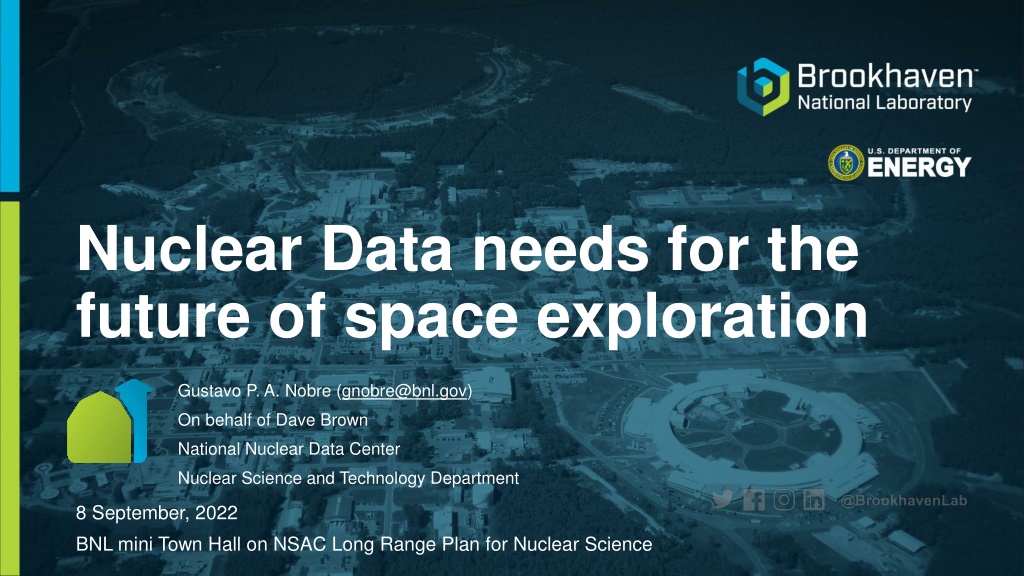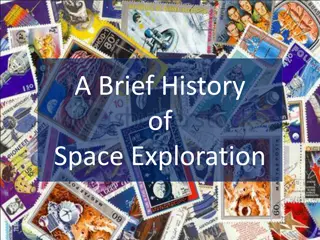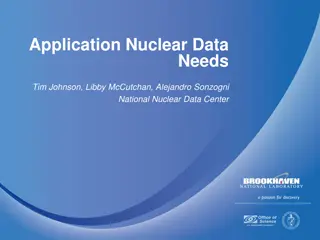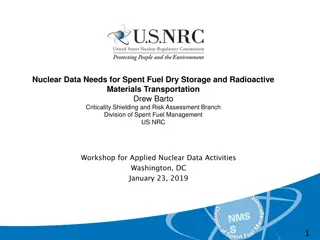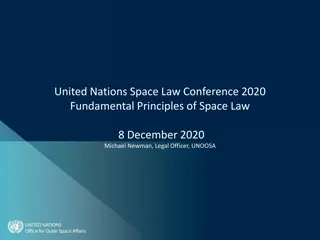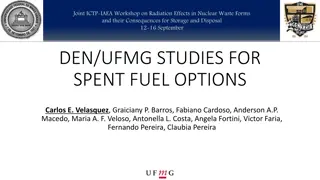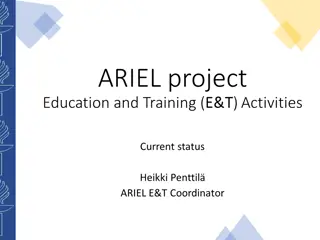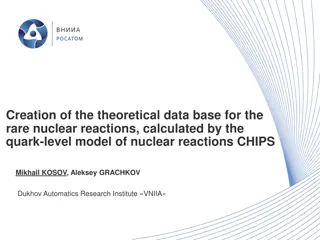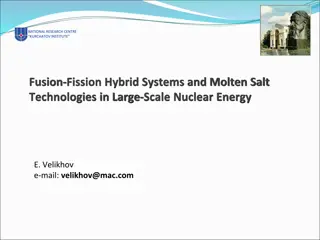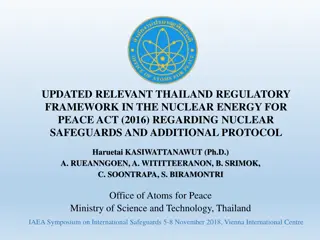Nuclear Data Needs for Future Space Exploration
The future of space exploration requires extensive nuclear data for shielding against Galactic Cosmic Rays (GCR) that pose challenges due to their high energy. Transport codes like FLUKA, PHITS, and GEANT4 play crucial roles in simulating shielding applications. There is a need for comprehensive data on cross sections, particle multiplicities, and outgoing particle distributions to produce meaningful results. Despite the gaps in data compilation, ongoing efforts by regional data projects and experimental data compilation projects are contributing to filling these voids.
Download Presentation

Please find below an Image/Link to download the presentation.
The content on the website is provided AS IS for your information and personal use only. It may not be sold, licensed, or shared on other websites without obtaining consent from the author. Download presentation by click this link. If you encounter any issues during the download, it is possible that the publisher has removed the file from their server.
E N D
Presentation Transcript
Nuclear Data needs for the future of space exploration Gustavo P. A. Nobre (gnobre@bnl.gov) On behalf of Dave Brown National Nuclear Data Center Nuclear Science and Technology Department 8 September, 2022 BNL mini Town Hall on NSAC Long Range Plan for Nuclear Science
The GCR background spans a huge mass and energy range covering virtually all of Nuclear Physics Galactic Cosmic Rays include nuclei as heavy as 56Fe and E/A up to 50 GeV For reference, Ebinding(56Fe) 0.5 GeV The range of 1 GeV proton in Al is > 1 m. It s even worse near the gas giants where their magnetic field meets the solar wind. These high-energy particles create cascades of hundreds of secondary, tertiary etc. particles The shielding itself can contribute to the variety of secondary particles produced. Charged secondary particles deposit a portion of their energy more locally than neutrons Slide from Lee Bernstein T.C. Slaba et al. Life Sciences in Space Research 12 (2017) 1 15 The solar system beyond the atmosphere and the earth s magnetic field is a tough neighborhood! Space exploration requires appropriate shielding over a wide range of energy
Transport codes for shielding applications INFN (Italy) http://www.fluka.org/fluk a.php FLUKA Free reg. Figure 1: Photograph of a BLIP target stack ready for proton bombardment. (courtesy of C. Cutler) JAEA (Japan)https://phits.jaea.go.jp PHITS Open Source MCNP LANL EC, RSICC https://mcnp.lanl.gov https://geant4.web.cern. ch GEANT4 Open Source CERN https://software.nasa.go v/software/LAR-18803-1 EC, NASA, Free reg. HZETRN NASA All codes have built in models that cover different physical regimes FLUKA simulation of the BLIP target stack showing the primary proton beam and secondary neutron production (N. Simos (2016)) 3
(ENDF) data tables Stopping Powers 5
What data do these codes need to produce meaningful results? Cross sections: Only total cross section and elastic/reaction cross section needed to first approximation Particle multiplicities Outgoing particle distributions: dN/dE d Flow, femtoscopy, jets, etc. are unimportant, but coellecense yields are essential! Two opportunities! Modeling support for shielding & isotope production applications! Additional fixed target run at RHIC before EIC 7
There are gaps in data compilation: no heavy-ions, not enough high energy Evaluated (this is what goes in transport codes): PDG only elementary particle properties CSEWG s ENDF (US data program) only < 150 MeV + decay data Three major regional data projects (JAEA, US, EU) have made forays into HE Experimental data compilation: EXFOR/NSR partial tabulation of data/references most comprehensive but poor HE coverage Smaller scale projects with basic science focus: HEPdata, nn-online, GWU DAC 3 year ROSSINI3 project (ESA-NASA-GSI) (see https://www.gsi.de/work/forschung/biophysik/fragmentation, https://crosssection- db.herokuapp.com) Pilot project to compile RHIC/AGS data @NNDC circa 2000, but data appears lost Opportunity to collaborate to meet data needs for space physics leveraging the high-energy and isotope programs 8
